|
News Archive: Aug. 12-31 |

|
How to build a big star
The most massive stars in our galaxy weigh as much as 100 small stars like the Sun. How do such monsters form? Do they grow rapidly by swallowing smaller protostars within crowded star-forming regions? Some astronomers thought so, but a new discovery suggests instead that massive stars develop through the gravitational collapse of a dense core in an interstellar gas cloud via processes similar to the formation of low mass stars.
 FULL STORY FULL STORY
 |  |

|
 |
Hubble telescope begins new way of operating
NASA's Hubble Space Telescope entered a new era of science operations this week, when engineers shut down one of the three operational gyroscopes aboard the observatory. The two-gyro mode is expected to preserve the operating life of the third gyro and extend Hubble's science observations through mid-2008, an eight-month extension.
 FULL STORY FULL STORY
 |  |
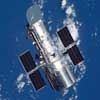
|
 |
NASA assisting facilities hit by Hurricane Katrina
NASA teams are working to determine how best to assist personnel from the agency's two facilities that suffered damage from Hurricane Katrina. Space Shuttle Program Manager Bill Parsons has been named the senior NASA official in charge of the hurricane recovery effort.
 FULL STORY FULL STORY
 |  |

|
 |
Cassini finds venting at south pole of Saturn moon
Evidence is mounting that the atmosphere of Enceladus is the result of venting from ground fractures close to the moon's south pole. New findings from the close flyby of Enceladus by Cassini this past July add to the emerging picture of a small icy body, unusual in its past and present level of activity, and very different from all other icy Saturnian moons.
 FULL STORY FULL STORY
 |  |

|
 |
Survey of galaxies shows cosmic scale of 'downsizing'
A comprehensive survey of more than 4,000 elliptical and lenticular galaxies in 93 nearby galaxy clusters has found a curious case of galactic "downsizing."
 FULL STORY FULL STORY
 |  |

|
 |
OTHER HEADLINES Additional stories today
|
 |
NASA assesses Hurricane Katrina damage -- NASA is marshaling agency resources to assist Gulf Coast-area facilities that suffered damage from Hurricane Katrina. The agency is preparing to provide help for NASA employees and contractors whose homes were damaged or destroyed.

Orbital to build Horizons-2 communications satellite -- Orbital Sciences Corporation announced Tuesday that the 50/50 joint venture between PanAmSat Corporation and JSAT Corporation has ordered one geosynchronous communications satellite to be based on Orbital's STAR small satellite platform. The spacecraft will carry the name Horizons-2.
|
 |
China puts up another recoverable satellite
Chinese airspace was busy Monday as the nation recovered and launched two separate return satellites likely carrying a wide array of experiments, demonstrations, and reconnaissance payloads for the nation's government, military, and research industries.
 FULL STORY FULL STORY
 |  |

|
 |
Shuttle fuel tank facility endures Hurricane Katrina
Lockheed Martin's Michoud Assembly Facility, the sprawling New Orleans plant where space shuttle external tanks are built, may have escaped catastrophic damage from Hurricane Katrina.
 FULL STORY FULL STORY
 EARLIER STORY EARLIER STORY
 |  |

|
 |
Pandora glides along
While close to Saturn in its orbit, Cassini stared directly at the planet to find Saturn's moon Pandora in the field of view. The F ring shepherd moon is gliding towards the right in this scene. The F ring is thinly visible just above the main rings.
 FULL STORY FULL STORY
 |  |

|
 |
Satellite operators Intelsat and PanAmSat to merge
Intelsat and PanAmSat announced that the two companies have signed a definitive merger agreement under which Intelsat will acquire PanAmSat for $3.2 billion. The joining will create a combined fleet of 53 communications satellites covering the globe, serving more than 220 countries and territories.
 READ MONDAY'S ANNOUNCEMENT READ MONDAY'S ANNOUNCEMENT
 |  |

|
 |
Earth observation satellite launched by Russia
Russia has a new eye in the sky to study the environment and assist in natural disasters after a successful Rockot launch delivered the small Monitor-E satellite into polar orbit.
 FULL STORY FULL STORY
 |  |

|
 |
Mars Reconnaissance Orbiter fires its engines
Doubling as a course-adjusting burn and a test run of the engines that will put the spacecraft into orbit around the Red Planet next March, NASA's Mars Reconnaissance Orbiter completed its first Trajectory Correction Maneuver on Saturday. "Everything looks right on," Wayne Sidney, MRO mission operations lead at Lockheed Martin said immediately after the roughly 15-second maneuver. "We're extremely pleased."
 PREVIEW STORY PREVIEW STORY
 VIDEO: FULL COVERAGE OF MRO VIDEO: FULL COVERAGE OF MRO
 |  |

|
 |
A Chinese dragon and a knotted galactic embrace
The Gemini Observatory has released a pair of images that capture the dynamics of two very
different interactions in space. One is a cold, dark dust cloud that resembles an ethereal-looking Chinese dragon. The other shows a distant duo of galaxies locked in a knot-like embrace that could portend the long-term future of our own Milky Way galaxy.
 FULL STORY FULL STORY
 |  |

|
 |
Name change for NASA's Texas balloon facility
NASA has officially changed the name of the National Scientific Balloon Facility (NSBF) in Palestine, Texas to the Columbia Scientific Balloon Facility. A congressman proposed the name change as a reminder of what the Columbia crew stood for: honor, bravery and the quest for knowledge for generations to come.
 FULL STORY FULL STORY
 |  |

|
 |
Saturn's atmospheric illusion imaged by Cassini
Believe it or not, this extreme close-up of Saturn's swirling clouds was acquired from more than one million kilometers from the gas giant planet. The rings' image is severely bent by atmospheric refraction as they pass behind the planet.
 FULL STORY FULL STORY
 |  |

|
 |
Texture of Tethys
This richly textured look at Saturn's moon Tethys shows the huge crater Odysseus and its central mountain in relief, as well as many smaller impact sites. Vertical relief on solid solar system bodies is often most easily visible near the terminator (the line between day and night).
 FULL STORY FULL STORY
 |  |
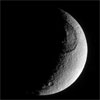
|
 |
Mars-bound probe to make major trajectory adjustment
NASA's Mars Reconnaissance Orbiter will take aim at the Red Planet Saturday by firing its six main engines during the first in a series of trajectory-changing maneuvers planned throughout the craft's seven-month cruise through interplanetary space.
 FULL STORY FULL STORY
 |  |

|
 |

Additional coverage for subscribers:
 VIDEO:
LAUNCH OF MARS ORBITER SHORT | LONGER VERSION VIDEO:
LAUNCH OF MARS ORBITER SHORT | LONGER VERSION
 VIDEO:
LIFTOFF AS SEEN FROM SHUTTLE VAB ROOF PLAY VIDEO:
LIFTOFF AS SEEN FROM SHUTTLE VAB ROOF PLAY
 VIDEO:
PLAYALINDA BEACH TRACKING CAMERA PLAY VIDEO:
PLAYALINDA BEACH TRACKING CAMERA PLAY
 VIDEO:
TRACKING CAMERA POSITIONED SOUTH OF PAD PLAY VIDEO:
TRACKING CAMERA POSITIONED SOUTH OF PAD PLAY
 VIDEO:
STATIC TEST ROAD VIEWING MOUND PLAY VIDEO:
STATIC TEST ROAD VIEWING MOUND PLAY
 VIDEO:
POST-FLIGHT INTERVIEW NASA LAUNCH DIRECTOR PLAY VIDEO:
POST-FLIGHT INTERVIEW NASA LAUNCH DIRECTOR PLAY
 VIDEO:
WATCH POST-LAUNCH NEWS CONFERENCE PLAY VIDEO:
WATCH POST-LAUNCH NEWS CONFERENCE PLAY

 VIDEO:
THE FIRST LAUNCH ATTEMPT IS SCRUBBED PLAY VIDEO:
THE FIRST LAUNCH ATTEMPT IS SCRUBBED PLAY
 VIDEO:
ROCKET IS ROLLED TO PAD PLAY VIDEO:
ROCKET IS ROLLED TO PAD PLAY
 VIDEO:
ATLAS 5 ROCKET PRE-LAUNCH PREPS PLAY VIDEO:
ATLAS 5 ROCKET PRE-LAUNCH PREPS PLAY
 VIDEO:
MARS RECONNAISSANCE ORBITER PRE-LAUNCH PREPS PLAY VIDEO:
MARS RECONNAISSANCE ORBITER PRE-LAUNCH PREPS PLAY
 VIDEO:
NARRATED ATLAS 5 LAUNCH ANIMATION PLAY VIDEO:
NARRATED ATLAS 5 LAUNCH ANIMATION PLAY
 VIDEO:
SCIENCE PREVIEW BRIEFING DIAL-UP | BROADBAND 1 & 2 VIDEO:
SCIENCE PREVIEW BRIEFING DIAL-UP | BROADBAND 1 & 2
 VIDEO:
PRE-LAUNCH NEWS CONFERENCE DIAL-UP | BROADBAND 1 & 2 VIDEO:
PRE-LAUNCH NEWS CONFERENCE DIAL-UP | BROADBAND 1 & 2
 SUBSCRIBE NOW SUBSCRIBE NOW

|
Major weather forecasting advancement revealed
NASA and the National Oceanic and Atmospheric Administration on Wednesday outlined research that has helped to improve the accuracy of medium-range weather forecasts in the Northern Hemisphere thanks to experimental data from an instrument onboard the Aqua satellite.
 FULL STORY FULL STORY
 |  |

|
 |
X-15 space pioneers now honored as astronauts
In a turbulent era of 1960s Cold War confrontations, moon race headlines, and war in southeast Asia, eight military and civilian test pilots flew the radical X-15 rocket plane out of the atmosphere and into the record books, earning astronaut status.
 FULL STORY FULL STORY
 |  |
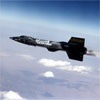
|
 |
Two Japanese satellites launched atop missile
��A Russian rocket formerly tipped with nuclear warheads blasted out of its missile silo shrouded in smoke and fire overnight Tuesday bound for space with a pair of Japanese technology demonstration satellites.
 FULL STORY FULL STORY
 |  |
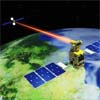
|
 |
Cassini spies moon Rhea
Like the rest of Rhea's surface, the southern polar region of this Saturn moon has been extensively re-worked by cratering over the eons. This close-up shows that most sizeable craters have smaller, younger impact sites within them. Near the left lies an intriguing gash.
 FULL STORY FULL STORY
 |  |
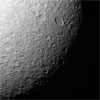
|
 |
Ambitious mission hopes to return bits of asteroid
Slowly pulling alongside a space rock the size of several typical city blocks, a Japanese probe is preparing to begin scooping the first dusty samples of material from the surface of an asteroid this fall for an eventual return to Earth.
 FULL STORY FULL STORY
 |  |
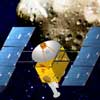
|
 |
Saturn's rings have their own atmosphere
Data from the Cassini spacecraft indicate that Saturn's majestic ring system has its own atmosphere - separate from that of the planet itself. During its close fly-bys of the ring system, instruments on Cassini have been able to determine that the environment around the rings is like an atmosphere, composed principally of molecular oxygen.
 FULL STORY FULL STORY
 |  |
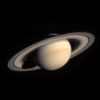
|
 |
OTHER HEADLINES Additional stories today
|
 |
Manufacturing milestone for James Webb Space Telescope -- NASA's James Webb Space Telescope (JWST) team completed the initial step in manufacturing all the primary mirrors for the next-generation space observatory's telescope -- an important program milestone. Northrop Grumman Corp. is the prime contractor, leading the JWST design and development effort.
|
 |
Boeing teams gearing up for reshuffled launch lineup
While one Delta 4 rocket remains bolted to its Florida launch pad awaiting better orbital conditions to deploy a U.S. weather observatory in a couple of months, Boeing crews are preparing to conduct a critical dress rehearsal for the first West Coast liftoff of the next-generation booster.
 FULL STORY FULL STORY
 VIDEO: FULL COVERAGE OF GOES-N VIDEO: FULL COVERAGE OF GOES-N
 |  |
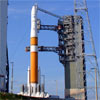
|
 |
Discovery returns home
Space shuttle Discovery, riding atop a 747 carrier aircraft, safely completed the final leg of its cross-country ferry flight to the Kennedy Space Center on Sunday morning, arriving at the Florida spaceport at 9:58 a.m. EDT. The shuttle made a low overpass of the area beaches before touchdown.
 MISSION STATUS CENTER MISSION STATUS CENTER
 |  |

|
 |

Additional coverage for subscribers:
 VIDEO:
FERRY FLIGHT SAFELY LANDS AT KENNEDY SPACE CENTER PLAY VIDEO:
FERRY FLIGHT SAFELY LANDS AT KENNEDY SPACE CENTER PLAY
 VIDEO:
TOUCHDOWN AT THE SHUTTLE LANDING FACILITY RUNWAY PLAY VIDEO:
TOUCHDOWN AT THE SHUTTLE LANDING FACILITY RUNWAY PLAY
 VIDEO:
DISCOVERY/747 TOUCHDOWN FROM RUNWAY MIDPOINT PLAY VIDEO:
DISCOVERY/747 TOUCHDOWN FROM RUNWAY MIDPOINT PLAY
 VIDEO:
ASTRONAUT ROBINSON WELCOMES DISCOVERY HOME PLAY VIDEO:
ASTRONAUT ROBINSON WELCOMES DISCOVERY HOME PLAY

 VIDEO:
DISCOVERY TAKES OFF TO BEGIN FERRY FLIGHT HOME PLAY VIDEO:
DISCOVERY TAKES OFF TO BEGIN FERRY FLIGHT HOME PLAY
 VIDEO:
CARRIER AIRCRAFT ASCENDS FROM MOJAVE DESERT PLAY VIDEO:
CARRIER AIRCRAFT ASCENDS FROM MOJAVE DESERT PLAY
 VIDEO:
AERIAL VIEWS OF THE FERRY FLIGHT'S FIRST MOMENTS PLAY VIDEO:
AERIAL VIEWS OF THE FERRY FLIGHT'S FIRST MOMENTS PLAY
 SUBSCRIBE NOW SUBSCRIBE NOW

|
Moving closer to timely space weather forecasts
Scientists funded by NASA have made big strides in learning how to forecast "all clear" periods, when severe space weather is unlikely. The forecasts are important because radiation from particles from the sun associated with large solar flares can be hazardous to unprotected astronauts, airplane occupants and satellites.
 FULL STORY FULL STORY
 |  |
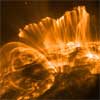
|
 |
Galactic survey reveals a new look for the Milky Way
With the help of NASA's Spitzer Space Telescope, astronomers have conducted the most comprehensive structural analysis of our galaxy and have found tantalizing new evidence that the Milky Way is much different from your ordinary spiral galaxy.
 FULL STORY FULL STORY
 |  |
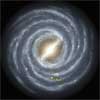
|
 |
NASA's Swift satellite finds newborn black holes
Scientists using NASA's Swift satellite say they have found newborn black holes, just seconds old, in a confused state of existence. The holes are consuming material falling into them while somehow propelling other material away at great speeds.
 FULL STORY FULL STORY
 |  |

|
 |
Next space shuttle launch: March 2006
As expected, NASA managers Thursday announced the next space shuttle flight will be delayed until at least next March to give engineers time to fix the external tank foam insulation problems that marred shuttle Discovery's launch last month.
 FULL STORY FULL STORY
 |  |

|
 |

Additional coverage for subscribers:
 VIDEO:
NEWS BRIEFING ON THE DELAY DIAL-UP | BROADBAND 1 & 2 VIDEO:
NEWS BRIEFING ON THE DELAY DIAL-UP | BROADBAND 1 & 2
 AUDIO:
LISTEN TO THE BRIEFING MP3 AUDIO:
LISTEN TO THE BRIEFING MP3
 SUBSCRIBE NOW SUBSCRIBE NOW

|
ISS spacewalk ends
The International Space Station's two resident crewmembers stepped outside their orbital home Thursday for a five-hour spacewalk to change out a Russian biological experiment, retrieve some radiation sensors, remove a Japanese materials science experiment, photograph a Russian materials experiment and install a TV camera. Work to relocate a grapple fixture was scrubbed because commander Sergei Krikalev and flight engineer John Phillips were running behind schedule, preventing sufficient time to finish the job. The excursion began at 3:02 p.m. EDT (1902 GMT) when the Pirs airlock module's outer hatch was opened to space and ended at 8 p.m.
 |  |

|
 |
Task group panelists blast space shuttle management
Seven members of an independent review panel Wednesday blasted NASA's management of the post-Columbia shuttle program, blaming poor leadership for ongoing, pervasive "cultural" problems and an erosion of engineering rigor that raise questions about the agency's willingness to fly without a thorough understanding of the risks involved.
 FULL STORY FULL STORY
 |  |

|
 |
Mars Reconnaissance Orbiter cruising normally
NASA's Mars Reconnaissance Orbiter, launched on Aug. 12, has completed one of the first tasks of its seven-month cruise to Mars, a calibration activity for the spacecraft's Mars Color Imager instrument.
 FULL STORY FULL STORY
 |  |

|
 |
Dawn at the Huygens site
Titan's equatorial latitudes are distinctly different in character from its south polar region, as this Cassini image shows. The dark terrain, presumably lowland, seen here does not extend much farther south than about 30 degrees South. The successful Huygens probe landed in such a region. The Huygens probe is rotating into the light here, seeing the dawn of a new day.
 FULL STORY FULL STORY
 |  |

|
 |
Delta 4 rocket launch put on extended hold
A second attempt at launching the GOES-N weather spacecraft aboard the Delta 4 rocket was scrubbed due to a last minute technical problem. Check the status center for updates.
 MISSION STATUS CENTER - live updates MISSION STATUS CENTER - live updates
 |  |
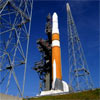
|
 |

Additional coverage for subscribers:
 VIDEO:
ALARM HALTS TUESDAY'S COUNTDOWN IN FINAL MINUTES PLAY VIDEO:
ALARM HALTS TUESDAY'S COUNTDOWN IN FINAL MINUTES PLAY
 VIDEO:
MONDAY'S LAUNCH ATTEMPT IS SCRUBBED PLAY VIDEO:
MONDAY'S LAUNCH ATTEMPT IS SCRUBBED PLAY
 VIDEO:
LAUNCH PAD SERVICE TOWER RETRACTED PLAY VIDEO:
LAUNCH PAD SERVICE TOWER RETRACTED PLAY
 VIDEO:
TIME-LAPSE MOVIE OF MONDAY'S TOWER ROLLBACK PLAY VIDEO:
TIME-LAPSE MOVIE OF MONDAY'S TOWER ROLLBACK PLAY
 VIDEO:
PRE-LAUNCH NEWS CONFERENCE DIAL-UP | BROADBAND VIDEO:
PRE-LAUNCH NEWS CONFERENCE DIAL-UP | BROADBAND
 SUBSCRIBE NOW SUBSCRIBE NOW

|
NASA successfully completes shuttle SRB test
NASA's space shuttle program successfully fired its first Production Rate Motor Tuesday at a Utah test facility. The two-minute static, or stationary, firing of the rocket motor was one of several annual tests conducted to qualify any proposed changes to the booster and to guarantee that new materials meet safety requirements.
 FULL STORY FULL STORY
 |  |

|
 |
Hubble pinpoints doomed star that exploded
Amidst the glitter of billions of stars in the majestic spiral galaxy called the Whirlpool, a massive star abruptly ends its life in a brilliant flash of light. NASA's Hubble Space Telescope snapped images of the exploding star, called supernova 2005cs, 12 days after its discovery.
 FULL STORY FULL STORY
 |  |

|
 |
Life components found in young universe
NASA's Spitzer Space Telescope has found the ingredients for life all the way back to a time
when the universe was a mere youngster. Using Spitzer, scientists have detected organic molecules in galaxies when our universe was one-fourth of its current age of about 14 billion years.
 FULL STORY FULL STORY
 |  |
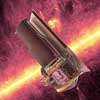
|
 |
Atlas 5 gears up for Pluto launch after Mars success
Lockheed Martin's venerable family of Atlas rockets are in the midst of a back-to-back lineup of interplanetary launches, the first deep space missions for Atlas boosters in over 27 years.
 FULL STORY FULL STORY
 |  |
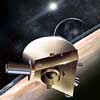
|
 |
Mars launch photo gallery
The first interplanetary Atlas 5 rocket was launched Friday from Cape Canaveral's Complex 41 to propel NASA's Mars Reconnaissance Orbiter on its seven-month voyage to the Red Planet. This is a gallery of photos showing the Lockheed Martin-built rocket's beautiful morning liftoff.
 PHOTO GALLERY PHOTO GALLERY
 |  |

|
 |
Soyuz rocket launches U.S. cable TV spacecraft
After a one-day countdown delay, a Russian Soyuz rocket carrying a U.S. television broadcasting satellite launched from Baikonur Cosmodrome in Kazakhstan at 2328 GMT (7:28 p.m. EDT) August 13. The rocket successfully deployed the Orbital Sciences-built Galaxy 14 craft into geosynchronous transfer orbit at 0105 GMT (9:05 p.m. EDT).
 FULL STORY FULL STORY
 |  |

|
 |
The first triple asteroid system observed
One of the thousands of asteroids orbiting the sun has been found to have a mini planetary system of its own. Astronomers have discovered the first triple asteroid system - two small asteroids orbiting a larger one known since 1866 as 87 Sylvia.
 FULL STORY FULL STORY
 |  |
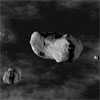
|
 |
Neon discovery solves mystery of sun's interior
NASA's Chandra X-ray Observatory survey of nearby sun-like stars suggests there is nearly three times more neon in the sun and local universe than previously believed. If true, this would solve a critical problem with understanding how the sun works.
 FULL STORY FULL STORY
 |  |

|
 |
Sharp-eyed orbiter dispatched to Mars
A Lockheed Martin Atlas 5 rocket boosted NASA's Mars Reconnaissance Orbiter into space August 12, kicking off a $720 million mission to sniff out underground ice deposits, to map the red planet's geology with unprecedented clarity and to monitor its tenuous, dusty atmosphere in an ongoing scientific assault.
 FULL STORY FULL STORY
 MISSION STATUS CENTER - live updates! MISSION STATUS CENTER - live updates!
 |  |

|
 |

Additional coverage for subscribers:
 VIDEO:
LAUNCH OF MARS ORBITER SHORT | LONGER VERSION VIDEO:
LAUNCH OF MARS ORBITER SHORT | LONGER VERSION
 VIDEO:
LIFTOFF AS SEEN FROM SHUTTLE VAB ROOF PLAY VIDEO:
LIFTOFF AS SEEN FROM SHUTTLE VAB ROOF PLAY
 VIDEO:
PLAYALINDA BEACH TRACKING CAMERA PLAY VIDEO:
PLAYALINDA BEACH TRACKING CAMERA PLAY
 VIDEO:
TRACKING CAMERA POSITIONED SOUTH OF PAD PLAY VIDEO:
TRACKING CAMERA POSITIONED SOUTH OF PAD PLAY
 VIDEO:
STATIC TEST ROAD VIEWING MOUND PLAY VIDEO:
STATIC TEST ROAD VIEWING MOUND PLAY
 VIDEO:
LAUNCH COMPLEX'S EAST CAMERA PLAY VIDEO:
LAUNCH COMPLEX'S EAST CAMERA PLAY
 VIDEO:
LAUNCH COMPLEX'S SOUTH CAMERA PLAY VIDEO:
LAUNCH COMPLEX'S SOUTH CAMERA PLAY
 VIDEO:
VERTICAL INTEGRATION FACILITY ROOF-CAM PLAY VIDEO:
VERTICAL INTEGRATION FACILITY ROOF-CAM PLAY
 VIDEO:
POST-FLIGHT INTERVIEW NASA LAUNCH DIRECTOR PLAY VIDEO:
POST-FLIGHT INTERVIEW NASA LAUNCH DIRECTOR PLAY
 VIDEO:
POST-LAUNCH NEWS CONFERENCE DIAL-UP | BROADBAND VIDEO:
POST-LAUNCH NEWS CONFERENCE DIAL-UP | BROADBAND

 VIDEO:
THURSDAY'S LAUNCH ATTEMPT IS SCRUBBED PLAY VIDEO:
THURSDAY'S LAUNCH ATTEMPT IS SCRUBBED PLAY
 VIDEO:
ROCKET IS ROLLED TO PAD WEDNESDAY NIGHT PLAY VIDEO:
ROCKET IS ROLLED TO PAD WEDNESDAY NIGHT PLAY
 VIDEO:
ATLAS 5 ROCKET PRE-LAUNCH PREPS PLAY VIDEO:
ATLAS 5 ROCKET PRE-LAUNCH PREPS PLAY
 VIDEO:
MARS RECONNAISSANCE ORBITER PRE-LAUNCH PREPS PLAY VIDEO:
MARS RECONNAISSANCE ORBITER PRE-LAUNCH PREPS PLAY
 VIDEO:
NARRATED ATLAS 5 LAUNCH ANIMATION PLAY VIDEO:
NARRATED ATLAS 5 LAUNCH ANIMATION PLAY
 VIDEO:
SCIENCE PREVIEW BRIEFING DIAL-UP | BROADBAND 1 & 2 VIDEO:
SCIENCE PREVIEW BRIEFING DIAL-UP | BROADBAND 1 & 2
 VIDEO:
PRE-LAUNCH NEWS CONFERENCE DIAL-UP | BROADBAND 1 & 2 VIDEO:
PRE-LAUNCH NEWS CONFERENCE DIAL-UP | BROADBAND 1 & 2
 SUBSCRIBE NOW SUBSCRIBE NOW

|
Pre-launch photo gallery
This is a gallery of Lockheed Martin photos showing the Atlas 5 rocket's nighttime from the Vertical Integration Facility assembly building to the Complex 41 launch pad Wednesday night and daytime views of the vehicle during Thursday's post-scrub countdown recycle.
 PHOTO GALLERY PHOTO GALLERY
 |  |

|
 |
|
Read our earlier news archive page.
|



